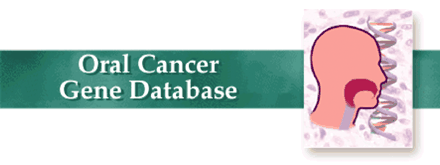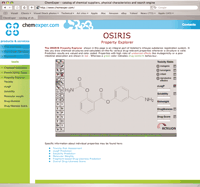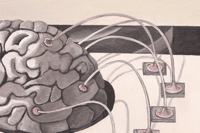Sites of interest on the World Wide Web–edited by Rick Neubig and David Roman
Cancer Gene Databases
The article by Tomko et al. in this issue of MI focuses on the antioxidant role of tumor suppressor p53. Several useful databases are available that include a wide variety of information about tissue-specific cancer genes. The Breast Cancer Gene Database allows visitors to search a wide variety of given topics to find breast cancer facts (http://condor.bcm.tmc.edu/ermb/bcgd/bcgd.html), and a sister site is offered by the Oral Cancer Gene Database (www.tumor-gene.org/Oral/index.html). General information about useful mouse models for cancer is hosted by the National Cancer Institute Cancer Models Database (http://cancermodels.nci.nih.gov/camod/login.do).
Compound Properties On-the-Fly!
The ChemExper Chemical Directory (http://www.chemexper.com/) is nominally a source for finding and purchasing chemicals, but the site offers a variety of Web-based tools that can be very helpful for researchers interested in drug discovery or drug-like molecules. The Property Explorer option (on the left menu) offers tools including a very intuitive JAVA-based sketching program through which you draw your prospect molecule—from your drawn structure, the program calculates some very useful parameters using the OSIRIS property explorer. Basic assessments of cLogP, solubility, and molecular weight are calculated or predicted. But the truly unique features lie in three major areas of compound assessment: Toxicity risk, fragment-based drug-likeness, and overall drug-likeness score. The drug-likeness score is perhaps the most interesting, presenting drug-likeness, cLogP, logS, molecular weight and toxicity risk as one “handy value,” with which the busy researcher can make quick comparisons among compounds of interest. Also of interest are the bases on which the program makes toxicity assessments, including tumorigenicity, teratogenic effects, irritant effects, and effects on reproduction. These assessments are based on a database of more than 3300 drugs that are currently on the market. The ChemExper Web site should provide significant insight into any compound identified through drug discovery efforts, and it is easy and fun to use.
From Basic Neuroscience to the Clinic in Two Pages
The Society for Neuroscience hosts an interesting collection of two-page Brain Briefings (http://web.sfn.org/content/Publications/BrainBriefings/index.html). These quick glimpses of current research areas, from axon guidance to visual development to venoms, provides brief but interesting background information for non-scientists or others interested in research topics related to brain research. Each briefing is complete with professionally generated graphics and photographs—potentially useful visual aids for teaching purposes! These pages are meant not as exhaustive literature reviews, but rather as very quick reference sheets that may be most useful for giving the uninitiated some background and interest in a particular topic.
New User Community for Molecular Biology Software
Invitrogen, known for cell culture media, fluorescent probes, and molecular biology reagents, has made a significant tool available to academic researchers at no cost. The Vector NTI software package, a very user-friendly and comprehensive suite of molecular biology tools, is now available. Navigate to www.invitrogen.com and select the TOOLs dropdown bar. By joining the Vector user community, you will have access to this very powerful software, formerly costing thousands of dollars. The software combines oligo design tools, a plasmid database, sequence alignments, protein tools and properties predictors, restriction enzyme databases and more, all in a logical-flowing package. It is particularly useful in that plasmids and constructs generated from existing stocks are tracked “behind the scenes” within the program. This means that if a sequence ever needs to be corrected, due to a previously undetected base change or restriction enzyme site, merely changing the original parent vector will trigger a series of prompts that take you through all of the daughter constructs and ask if they should be changed as well. Even more useful is the ability for a lab to store data in a central database that is accessible to every user, eliminating the need to search for information on a particular computer terminal. While there is a learning curve to become proficient with the software, it is well worth taking the time to use this powerful—and FREE—software package.
- © American Society for Pharmacology and Experimental Theraputics 2006








